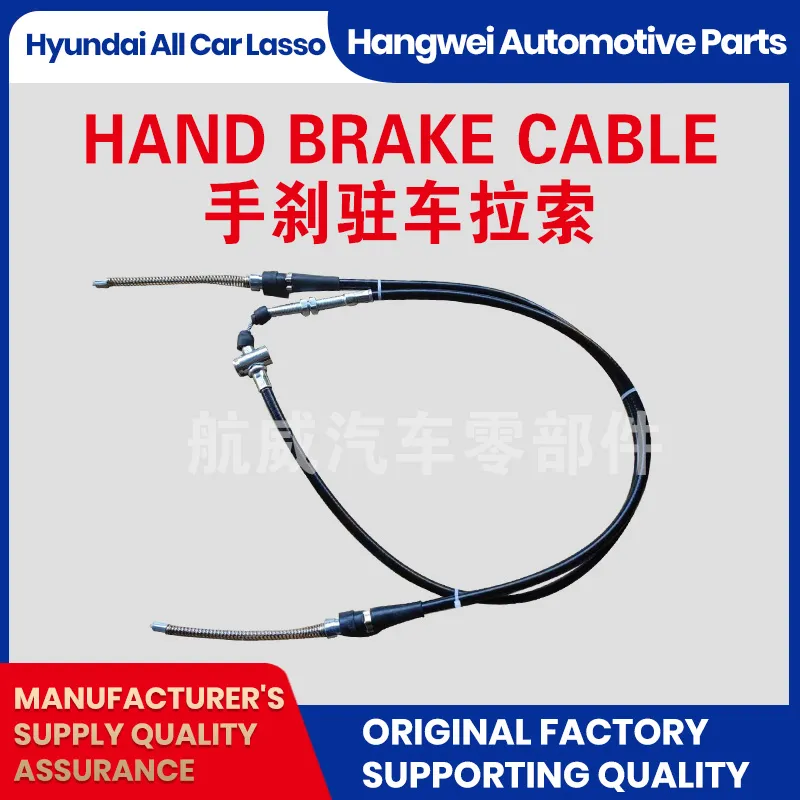hydraulic clutch line
Understanding Hydraulic Clutch Lines Function, Importance, and Maintenance
Hydraulic clutch lines are critical components in the functioning of manual transmissions in automobiles. Their primary role is to transfer hydraulic fluid from the clutch master cylinder to the slave cylinder, enabling the engagement and disengagement of the clutch when the driver presses the clutch pedal. This system enhances the performance and smoothness of gear shifting, contributing to a better driving experience.
Components of Hydraulic Clutch Systems
A typical hydraulic clutch system consists of several key components 1. Clutch Master Cylinder Located near the driver's footwell, this cylinder converts the mechanical force exerted by the driver’s foot on the clutch pedal into hydraulic pressure. 2. Hydraulic Lines These lines transport the hydraulic fluid from the master cylinder to the slave cylinder. Hydraulic lines are usually made of flexible rubber or steel to withstand high pressure and prevent leakage. 3. Clutch Slave Cylinder Positioned near the clutch assembly, the slave cylinder receives hydraulic pressure from the master cylinder and pushes a rod that disengages the clutch. 4. Hydraulic Fluid A special fluid is used to transmit force efficiently. It must be maintained at the proper level and quality to ensure optimal performance.
How Hydraulic Clutch Lines Work
When the driver presses the clutch pedal, the master cylinder generates hydraulic pressure. This pressure travels through the hydraulic lines to the slave cylinder. The slave cylinder then pushes on a fork mechanism that disengages the clutch plate from the flywheel. This process allows the driver to change gears smoothly and effectively without grinding the gears.
The advantages of a hydraulic clutch system include less physical effort required from the driver to operate the clutch, smoother engagement and disengagement, and better modulation of the clutch action. This design is particularly beneficial in performance-oriented cars and heavy-duty vehicles.
hydraulic clutch line

Importance of Maintenance
Like any vehicle component, hydraulic clutch lines require regular maintenance to ensure longevity and performance. Over time, hydraulic lines can develop wear and tear, leading to leaks or bursts. A compromised line can result in a loss of hydraulic pressure, making it difficult or impossible to disengage the clutch, which can create hazardous driving conditions.
Routine inspections should check for any signs of leakage, abrasions, or kinks in the hydraulic lines. If any issues are detected, it is crucial to replace the affected lines promptly. Additionally, it’s important to check the hydraulic fluid level and condition regularly. Contaminated or worn-out fluid can lead to reduced performance and even damage the hydraulic components.
Some symptoms of a failing hydraulic clutch system include a spongy or unresponsive clutch pedal, difficulty changing gears, or a noticeable fluid leak underneath the vehicle. If any of these symptoms are present, it is advisable to seek professional assistance as soon as possible.
Conclusion
Hydraulic clutch lines play an essential role in the operation of manual transmissions, facilitating smooth and efficient gear shifts. Understanding their function, maintaining them properly, and addressing any issues promptly can greatly enhance vehicle performance and reliability. Whether you are an avid car enthusiast or an everyday driver, knowing about your hydraulic clutch system can lead to better care for your vehicle and an overall improved driving experience. Regular inspections and maintenance are key to ensuring that the clutch system operates smoothly and efficiently for years to come.
-
Upgrade Your Control with Premium Throttle CablesNewsAug.08,2025
-
Stay in Control with Premium Hand Brake CablesNewsAug.08,2025
-
Experience Unmatched Performance with Our Clutch HosesNewsAug.08,2025
-
Ensure Safety and Reliability with Premium Handbrake CablesNewsAug.08,2025
-
Enhance Your Vehicle with High-Performance Clutch LinesNewsAug.08,2025
-
Elevate Your Ride with Premium Gear CablesNewsAug.08,2025
